How to make a panel from threads and nails?
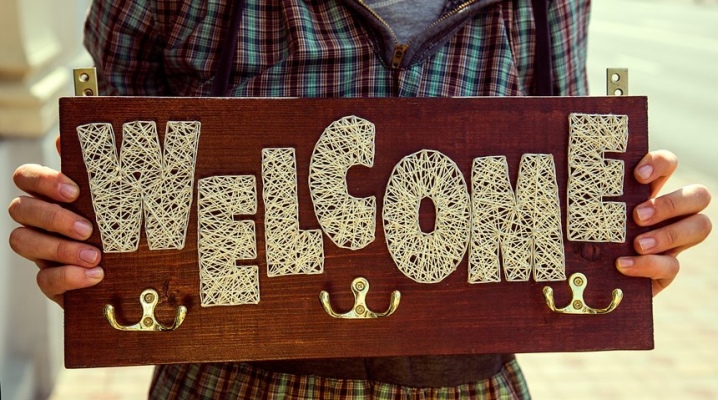
Today it has become fashionable to decorate the interior of living rooms, restaurant walls, halls of medical centers and other premises with artwork using string-art technique. Such works fascinate, attract attention, make you relax and calm down. And we are not talking about paintings created with strokes of oil paints, but about fakes, which are based on nails and threads.
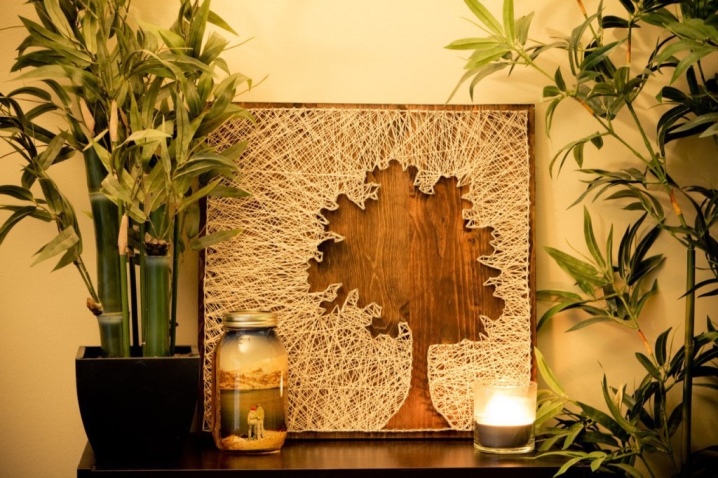
This creative idea is not new. Every year she finds more and more new adherents. Most notably, the string-art technique does not require the use of glue. The main thing is to choose the right sketch, choose the appropriate thread thickness and visually present the panel in volumetric form. By adhering to these rules, you will be able to create the perfect decoration for any room.
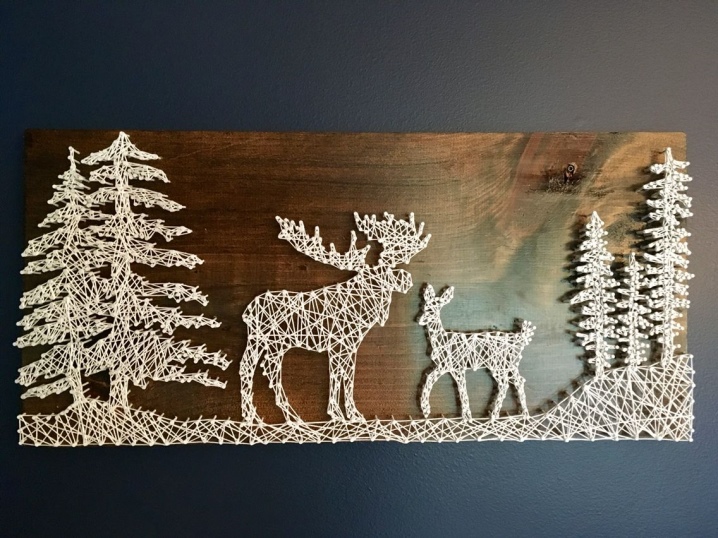
Peculiarities
String-art is a technique for making paintings using the usual nails and threads. Today it is considered a very popular creative trend. In bookstores you can find publications dedicated to this type of creativity, where the subtleties and nuances of work are described in detail. The presented art form requires special care, clarity and concentration from the master. Thanks to these aspects, the finished picture will receive maximum praise, and the performer will bathe in applause.
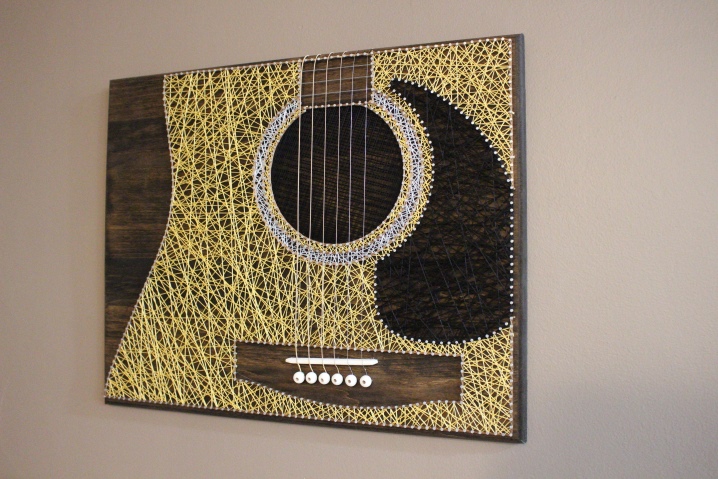
As a basis, any material can be used that is sensitive to driving in nails. It is through them that the thread winding occurs, which transforms the sketch into a whole image. It should be noted that paintings in the string-art technique can be done independently or involve small children in the work... First, babies develop fine motor skills. Secondly, abstractive thinking is developed. Children can be given a try to make a sketch of a future painting on their own and transfer it to the base.
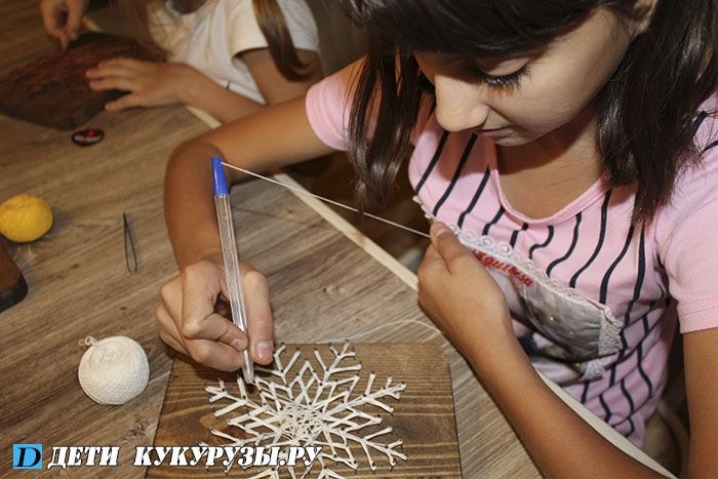
Today there are many specialized literature, as well as various needlework sites, where craftsmen and their students are provided with schemes of paintings on any topic. However, young professionals are encouraged to start with light, monochrome images. Only after gaining sufficient experience, you can make more complex wicker crafts.
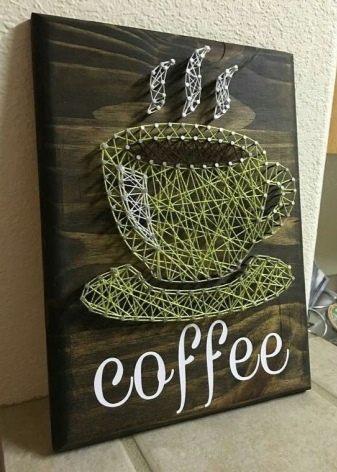

Panels made of nails and threads can be an ideal gift for any occasion. The main thing is to choose the right topic.

For example, on March 8, the image of a bouquet of flowers will do, and for the New Year it is appropriate to make a snowflake or Santa Claus. Psychologists, in turn, advise their patients suffering from diseases of the nervous system to resort to the artistic technique of string-art. Such people are constantly haunted by stress, and weaving from threads is a kind of calming process.

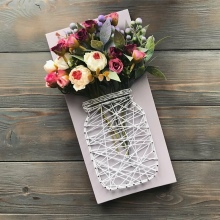
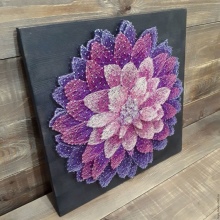
Materials and tools
To fully master the string-art technique, you will have to stock up on certain materials. For the initial work, you only need a base, nails and threads. The base must be made of solid material. It can be plywood, a piece of cork, fiberboard, or even foam.

It is very important that the surface of the base is smooth and can be painted in a different color.
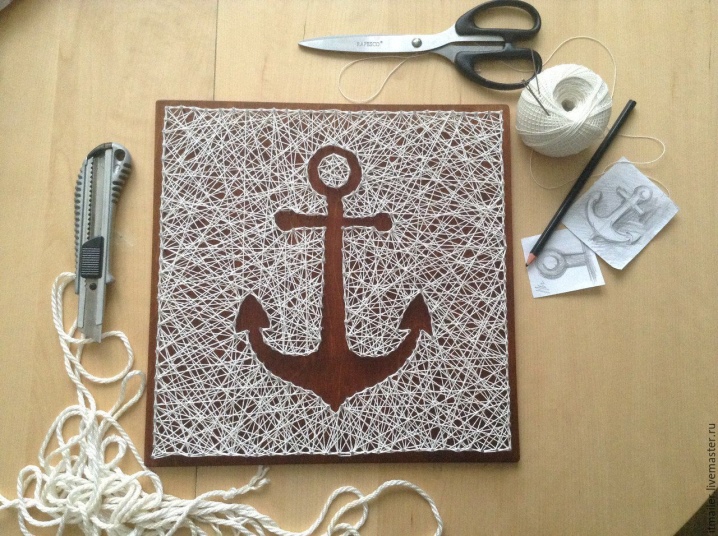
If suddenly a foam sheet was chosen as the base, then instead of nails it is preferable to use needles, invisible pins or pins with a small eyelet. They can be purchased at any hardware store. To create most of the paintings, craftsmen use a foam base. It is impossible to paint it with ordinary gouache. Acrylic paints will be the ideal dye.But first, the foam must be primed.
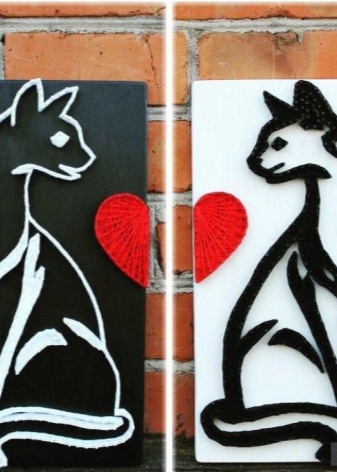
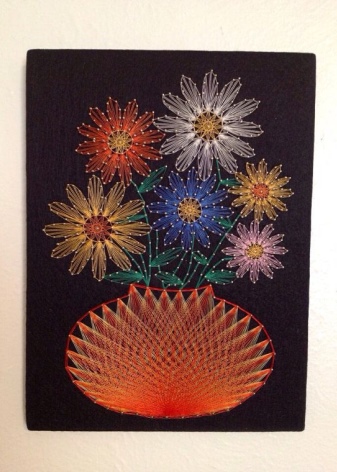
You will also have to purchase several packs of nails. For small jobs, the minimum number is used. If the picture is large and filled with contrasting inserts, the required number of nails increases significantly. To purchase metal consumables, craftsmen go to hardware stores. There, nails are presented in different shapes and sizes.

For a panel made of threads, it is preferable to use a decorative, furniture or carpentry variety of nails.
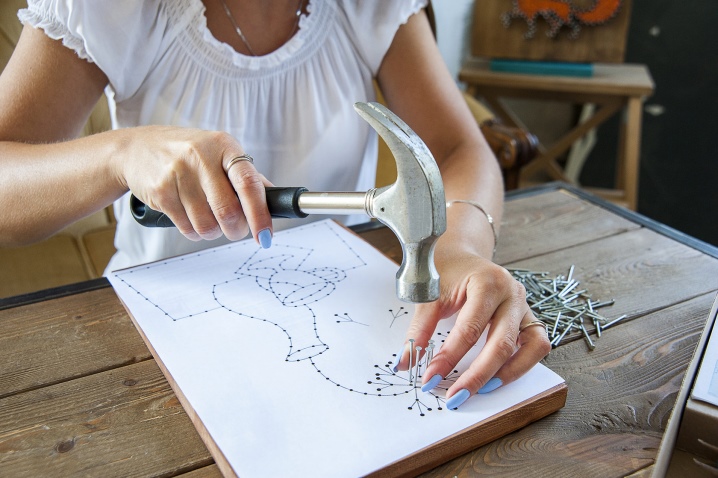
Next, you need to consider the issue of threads used in the work. If we consider the material in terms of density, woolen threads for knitting are best suited. However, experienced craftsmen recommend trying floss and twisted threads. Silk threads should be discarded as they are slippery and cannot be firmly fixed in place.

In addition to materials, a number of specific tools will be required.
- Scissors. They must be sharp so that the threads do not have dangling ends when cutting.
- Pliers. They facilitate the removal of hammered nails without damaging their even shape.
- Long nose pliers. This tool helps you drive nails in so they stay straight, don't bend or break.
- Sketch. The intended picture must be drawn on paper.
- Double-sided tape. Required to fix the sketch. As an analogue, pushpins will do.
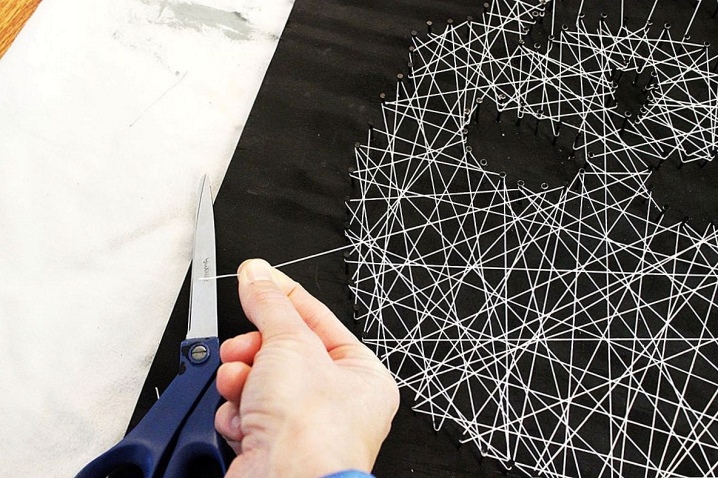
Execution technique
Getting started with the string-art technique is necessary by studying the correct filling of corners and a circle. The rest of the shapes, namely circle, square and oval, are derivatives. To practice the initial skills, you will need to draw a right angle on paper. The length of the 1st side should be 10 cm, and the other 5 cm. 10 cm should be divided into pieces of 1 cm each and numbered.
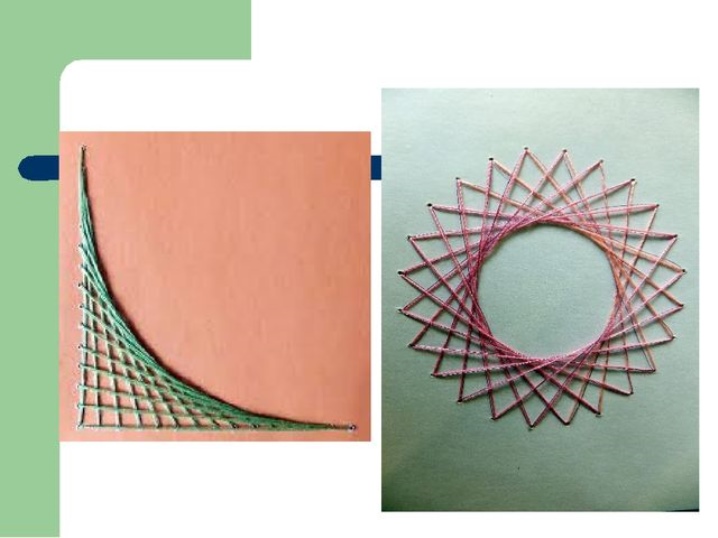
The second strip, on the contrary, is divided into 10 parts and is also numbered. Then, with an ordinary pencil or pen, a continuous wrapping line is drawn, clinging to each point. The skill of working with a circle is practiced in a similar way.
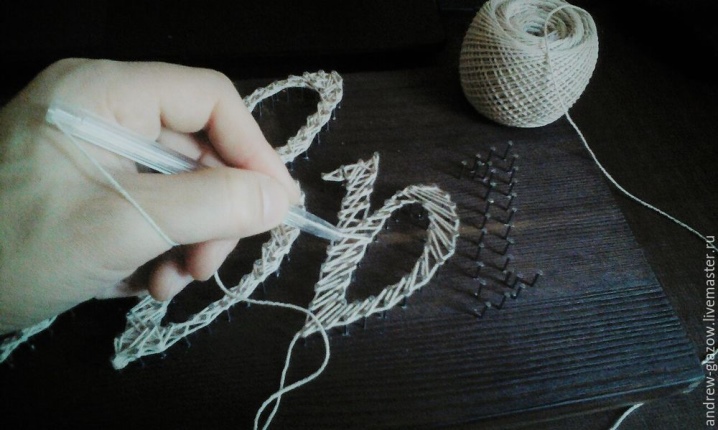
It is worth noting that the string-art technique allows for arbitrary winding of the threads. But the main thing here is to have a sense of proportion so that there are not many thread overlays in one place.

It is also important to study how deeply you need to drive in the nails. If the painting is to be multi-layered, the nails should stick out high. A plain flat image assumes a minimum distance from the base of the craft to the cap of the contour. Pliers are required to ensure that the nails are driven to the same height.

Particular attention should be paid to the novice craftsman changing the thread palette. Initially, the tip is tied to 1 of the nails. Next, winding begins. When it is necessary to change the color, the end of the wound thread is tied to the nearest stud. In the same place, yarn of a different color is tied and the winding continues.
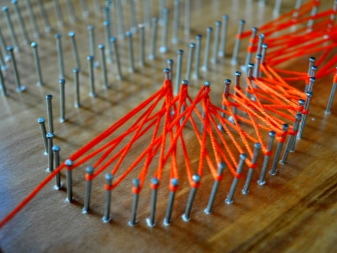
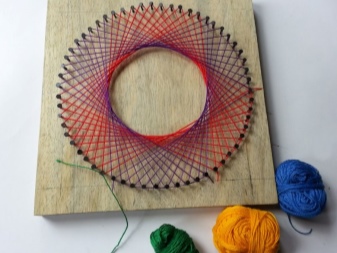
Having gained a minimum of experience, you can begin to study ways to fill the pattern with threads, create edging and multilayer compositions. Further, it is proposed to familiarize yourself with several master classes that allow you to master the basics of string-art technique. Masters advise to start by recreating the image of a deer. To work, you need a small list of tools and materials:
- scissors;
- hammer;
- substrate;
- nails;
- paper;
- pencil;
- buttons.
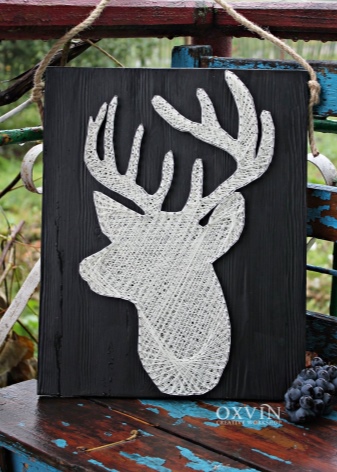
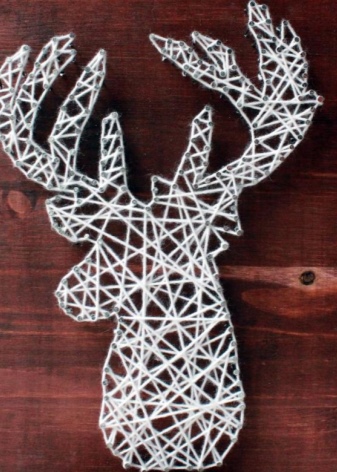
Having collected the necessary tools, you can start creating the 1st masterpiece.
- As a base, a plank of wood, plywood, fiberboard or foam is required. If necessary, clean its surface.
- You need to print a picture on a printer or make a sketch with your own hands. Next, the image is cut along the contour.
- The cut picture is superimposed on the background and fixed with buttons. Then, markings are made at the base of the outline with a simple pencil. It is important that the distance between them is the same.
- Nails are driven into the marks made.The paper template is removed but kept close as a diagram.
- A thread is tied to any nail, the winding of the contour and the inside begins. At the end of the work, the tip is tied on a nail into a knot.
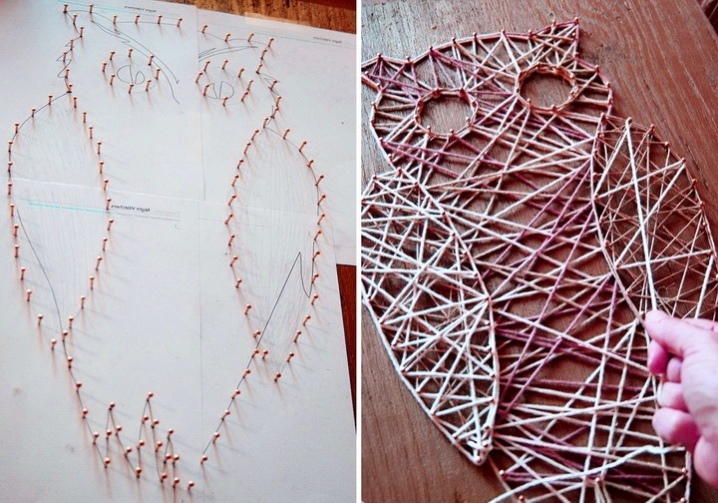
You can keep the first work for yourself, for example, hang it on the wall in your bedroom or in your workshop. Now you can try to create a heart. To do this, you will also need to stock up on some tools and materials:
- hammer;
- scissors;
- nails;
- a thread;
- the foundation;
- sandpaper;
- dye;
- brushes;
- paper;
- Scotch.
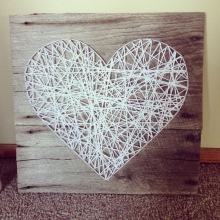

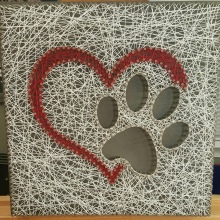
You can get to work.
- First you need to prepare the foundation. It is best to use a wooden plank. It must be cleaned, sanded, painted in the desired color.
- It is necessary to draw a sketch of the heart on paper, cut it out.
- Attach the contour sketches to the base, fix. Drive nails along the contour at the same distance from each other. Next, the paper sample is removed from the base and set aside.
- A thread is attached to the lowest nail. After that, weaving along the contour begins. Then the inside of the heart is covered with a chaotic winding.
- The final stage of creating beauty requires making a surface edging. To do this, you need to thread a thread through all the nails with a snake. At the end, fix the thread at the end point with a knot.

At the end of each master class, tips for beginners are heard.
- Thick paper or cardboard is preferred for sketching.
- Small details of the picture in a panel made of threads will look ridiculous.
- To create volume, the sketch is painted over to match the color of the threads and remains on the base.
- The main thing is to be calm, take your time and carefully follow the thread.
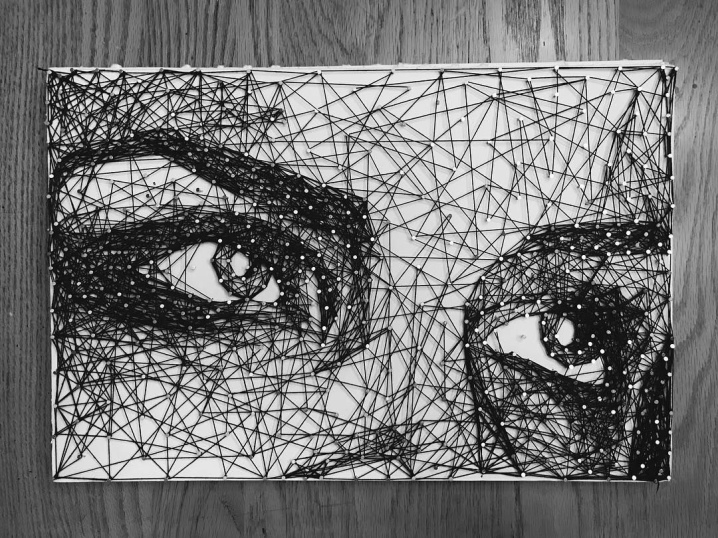
A lesson on making a panel from threads and nails in the video below.













The comment was sent successfully.